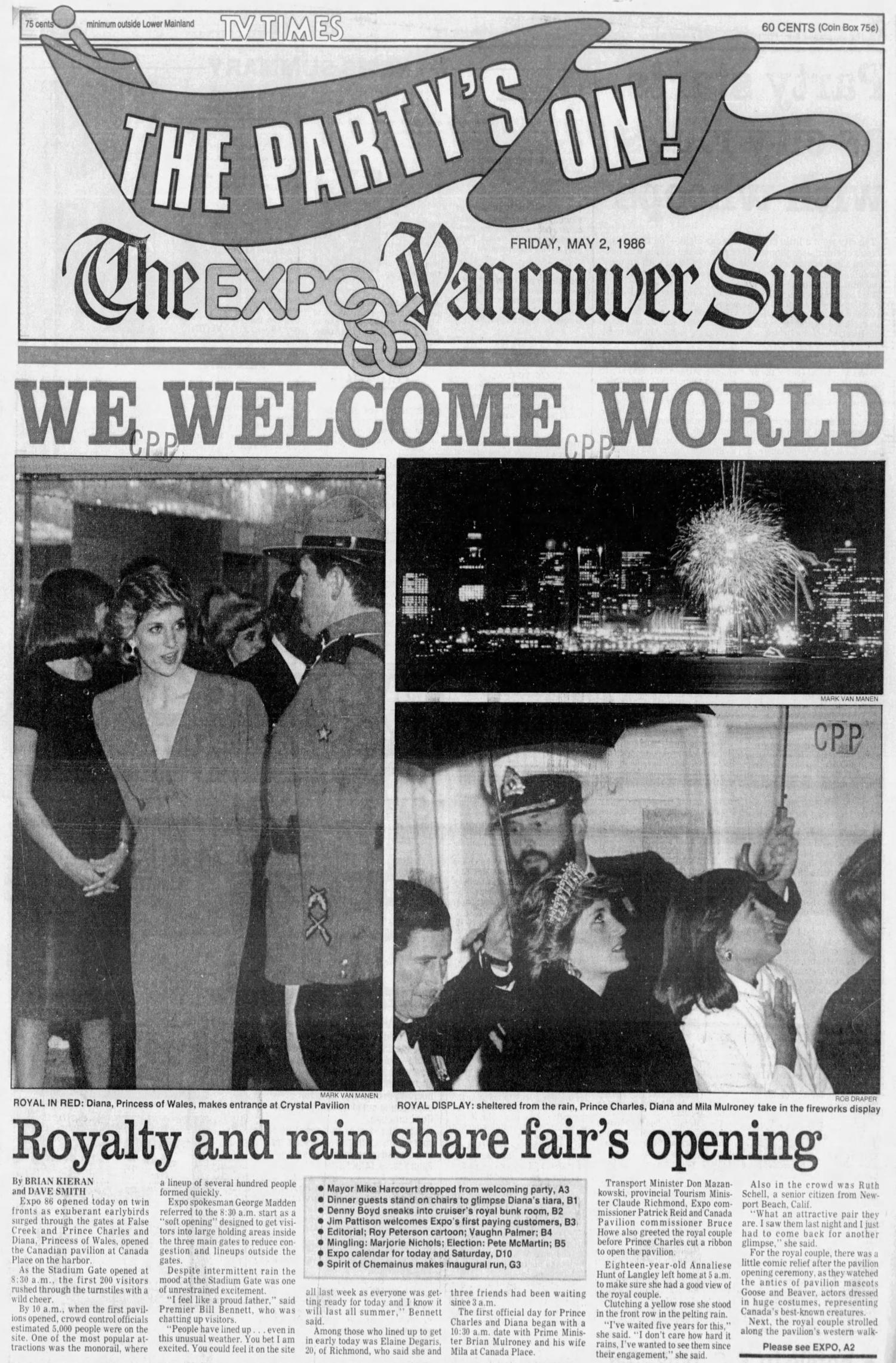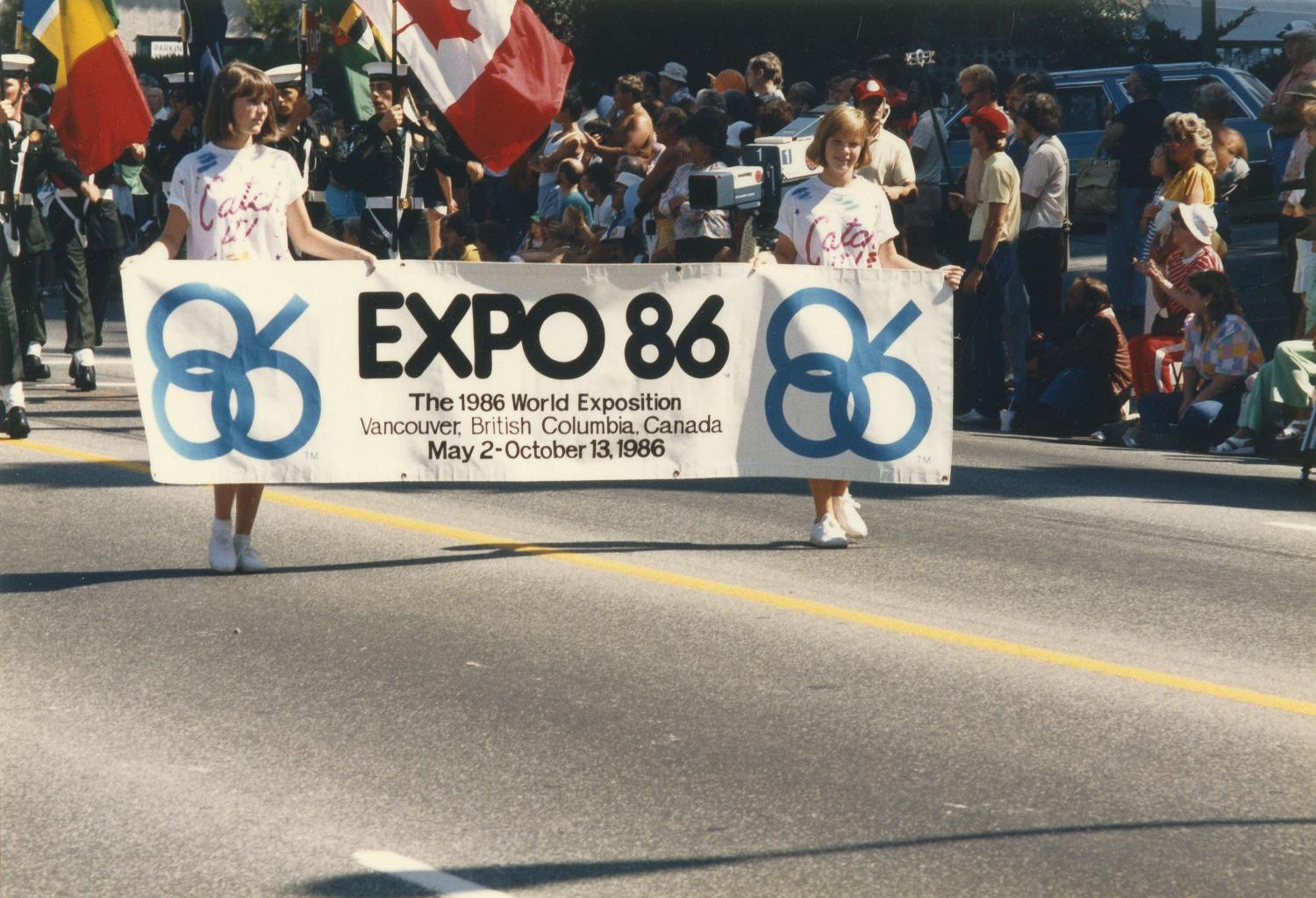Expo 86
A world fair transforms Vancouver into a popular hub for tourism and real estate
Date: 1986
In 1986, Vancouver turned 100 years old, and the city threw a party that lasted nearly six months. The 1986 World Exposition on Transportation and Communication — or, simply, Expo 86 — was a wild hodge-podge of live music, exciting rides and cultural exhibitions from around the world. And though the fair came to an end on Oct. 13, it set Vancouver on a path to becoming the cosmopolitan metropolis it is today. But Expo 86’s legacy is not without controversy. To make way for millions of tourists, hundreds of low income and elderly residents in the Downtown Eastside were evicted from their homes, some at only a moment’s notice.
In the early 1980s, British Columbia was in a deep recession. A months-long fair introducing Vancouver to the world offered a way out of the province’s economic rut. With funding from the federal and provincial governments, as well as a handful of corporate sponsors, business tycoon Jimmy Pattison was placed at the helm of Expo 86 Corp. to plan and oversee the festivities. A flurry of infrastructure projects ensued. The lead up to Expo 86 saw the construction of many of Vancouver’s most well-known landmarks, including Canada Place, the SkyTrain’s Expo Line, and Science World, then called the Expo Centre.
The jamboree officially kicked off on May 2 with a rainy ceremony featuring Prince Charles and Princess Diana. By now, the north side of False Creek had been transformed from a mostly industrial area into bustling fairgrounds. Dozens of countries set up custom-crafted pavilions across the 70-hectare site. Enormous curios like a giant replica of an ancient Egyptian temple drew wonder amid amusement rides and other carnival staples. Canada’s first world fair since Expo 67 in Montreal even cast stubborn geopolitics to the side. In the Cold War’s dwindling days, the expo offered a rare stage for the United States, the Soviet Union and the People’s Republic of China to proudly show off their cultures and achievements side by side.
And the party always continued past sunset. Attendees watched nightly fireworks and raced between musical performances by renowned artists like Miles Davis, Johnny Cash and Kool & The Gang. In a span of 165 days, a quiet city with limited nightlife had reinvented itself. Organizers had expected 14 million visitors. Instead, Expo 86 drew more than 22 million. "Our slogan was 'Invite the World.’ And they came. They showed up," Pattison recalled decades later. He believes the fair "surged [Vancouver] onto the world stage."
Others weren’t so thrilled. Days before Expo 86 began, single-room occupancy (SRO) buildings in the Downtown Eastside kicked out more than a thousand low income tenants in anticipation of the wealthier tourists to come. At the time, B.C.’s tenancy rules didn’t apply to those living in SROs, many of whom were informed of their fate only verbally. Homelessness spiked, while one man in his late eighties named Olaf Solheim, who had managed to secure new housing, died weeks later. “He'd been moved from where he was to a place he didn't want to be, and he simply lost his will to live, and he died,” explained Dr. John Blatherwick, then Vancouver's chief medical health officer. Solheim’s death and the experience of other displaced people garnered international media attention.
In the end, the $800-million fair ran a $300-million deficit, but it attracted an extra $3.7 billion to the Canadian economy. The years that followed saw the False Creek fairgrounds transformed once again. In 1988, Hong Kong billionaire Li Ka-shing purchased most of that land for $320 million. Shiny glass condominiums soon sprang up, and Vancouver was on its way to cementing its status as a cosmopolitan city and global hub for real estate.
Sources:
- “1986 Vancouver.” Expo Museum, expomuseum.com/1986. Accessed 26 Apr. 2021.
- Baker, Rafferty. “Expo 86 Evictions: Remembering the Fair’s Dark Side.” CBC, 4 May 2016, www.cbc.ca/news/canada/british-columbia/expo-86-evictions-remembered-1.3566844.
- Chan, Cheryl. “Expo 86: When Vancouver Wooed the World — 30 Photos, 30 Years Later.” Vancouver Sun, 15 May 2016, vancouversun.com/news/local-news/expo-86-when-vancouver-wooed-the-world-30-photos-30-years-later.
- Freed, Kenneth. “‘Old Olaf’s’ Death Sparks Controversy : Vancouver Hotels Evict Poor to Cash In on Expo.” Los Angeles Times, 26 Apr. 1986, www.latimes.com/archives/la-xpm-1986-04-26-mn-2210-story.html.
- “Jim Pattison on How Expo 86 Changed Vancouver.” Vancouver Magazine, 16 Aug. 2016, www.vanmag.com/jim-pattison-on-how-expo-86-changed-vancouver.
- Korstrom, Glen. “The Expo Effect: How Expo 86 Changed Vancouver.” Business in Vancouver, 26 Apr. 2016, biv.com/article/2016/04/expo-effect-how-expo-86-changed-vancouver.
- Lawrence, Grant. “Expo 86: A Troubled Legacy.” Vancouver Is Awesome, 27 Apr. 2016, www.vancourier.com/news/expo-86-a-troubled-legacy-1.2241488.
- “Legacy of Expo 86.” Heritage Vancouver, 2019, heritagevancouver.org/top10-watch-list/2019-top10-watch-list/8-legacy-of-expo-86.
- Olds, Kristopher Nelson. “Planning for the Housing Impacts of a Hallmark Event : A Case Study of EXPO 86.” UBC Library Open Collections, 1988, open.library.ubc.ca/cIRcle/collections/ubctheses/831/items/1.0302352.
- O’Leary, Kim Patrick. “Expo 86.” The Canadian Encyclopedia, 7 Feb. 2006, www.thecanadianencyclopedia.ca/en/article/expo-86.
- Schaefer, Glen. “Expo 86: Its Legacy Is All around Us 30 Years Later.” The Province, 20 June 2016, theprovince.com/news/local-news/expo-86-its-legacy-is-all-around-us-30-years-later.
- “This Day in History: May 2, 1986.” Vancouver Sun, 2 May 2012, vancouversun.com/news/this-day-in-history-may-2-1986.





